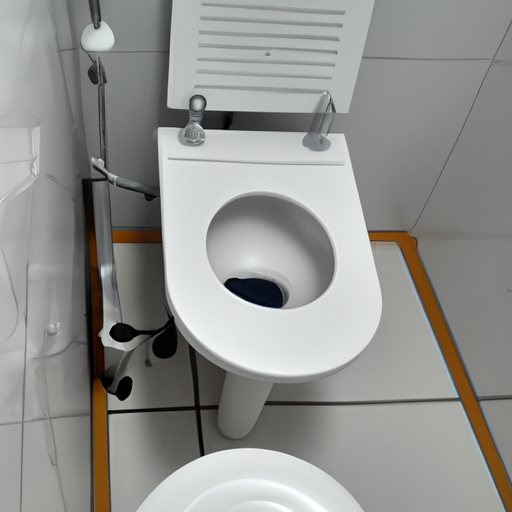 The Phone Bill Gambling & Casino SMS Bill with Coinfalls Casino, Pocketwin Review posts at CasinoPhoneBill.com
The Phone Bill Gambling & Casino SMS Bill with Coinfalls Casino, Pocketwin Review posts at CasinoPhoneBill.com
WC Fixtures Table 2026
-
Casino Phone Bill Slots | Mobile Casino, Bets and Gambling Views
- Introduction
- How the 2026 World Cup Fixtures Table is Shaping Up
- A Look at the Top Contenders for the 2026 World Cup
- Analyzing the Group Stage of the 2026 World Cup Fixtures Table
- Exploring the Impact of Host Nations on the 2026 World Cup Fixtures Table
- Examining the Impact of Recent Rule Changes on the 2026 World Cup Fixtures Table
- Breaking Down the 2026 World Cup Fixtures Table by Region
- How to Maximize Your Chances of Winning in the 2026 World Cup Fixtures Table
- A Closer Look at the 2026 World Cup Knockout Rounds
- Examining the Role of Home Field Advantage in the 2026 World Cup Fixtures Table
- Analyzing the Effect of Weather on the 2026 World Cup Fixtures Table
- Predicting Who Will Win the 2026 World Cup Based on the Fixtures Table
- Exploring How Teams Can Use the 2026 World Cup Fixtures Table to Their Advantage
- Q&A
- Conclusion
“Experience the Future of WC Fixtures with Table 2026!”
Introduction
Welcome to the WC Fixtures Table 2026! This table provides a comprehensive overview of the upcoming World Cup matches in 2026. Here you will find all the information you need to know about the teams, venues, dates, and times of each match. You can also find out which teams are playing each other and which teams are in each group. With this table, you can easily plan your World Cup viewing schedule and make sure you don't miss any of the exciting matches. So let's get started and take a look at the WC Fixtures Table 2026!
How the 2026 World Cup Fixtures Table is Shaping Up
The 2026 FIFA World Cup is shaping up to be one of the most exciting tournaments in recent memory. With 48 teams competing, the tournament will be the largest ever, and the fixtures table is beginning to take shape.
The tournament will be hosted by three countries: Canada, Mexico, and the United States. Each country will host 16 teams in the group stage, with the remaining 16 teams playing in a single-elimination round. The top two teams from each group will advance to the knockout stage.
The tournament will begin on June 16th, 2026, with the opening match taking place in Mexico City. The final match will take place on July 17th in New York City.
The group stage will feature eight groups of six teams each. Each team will play three matches in their group, with the top two teams advancing to the knockout stage. The knockout stage will feature four rounds of single-elimination matches, culminating in the final match on July 17th.
The tournament will feature some of the best teams in the world, including defending champions France, Brazil, Argentina, Germany, Spain, and England. Other teams expected to make a strong showing include Belgium, Portugal, Italy, and Colombia.
The 2026 World Cup promises to be an exciting tournament for fans around the world. With 48 teams competing and three countries hosting, it is sure to be an unforgettable event. As the fixtures table continues to take shape, fans can look forward to an exciting summer of football in 2026.
A Look at the Top Contenders for the 2026 World Cup
The 2026 World Cup is fast approaching, and the race to host the tournament is heating up. With three countries vying for the honor, the competition is sure to be fierce. Here's a look at the top contenders for the 2026 World Cup.
The first contender is the United States, Mexico, and Canada. The three countries have submitted a joint bid to host the tournament, and their proposal has been met with enthusiasm from FIFA. The bid promises to bring unprecedented levels of infrastructure and financial support to the tournament, making it an attractive option for FIFA.
The second contender is Morocco. The North African nation has long been a popular destination for international football tournaments, and its bid for the 2026 World Cup has been met with enthusiasm from FIFA. Morocco has promised to provide world-class stadiums and infrastructure, as well as a safe and secure environment for players and fans alike.
The third contender is South Africa. The African nation has hosted two previous World Cups, in 2010 and 2014, and its bid for the 2026 tournament has been met with enthusiasm from FIFA. South Africa has promised to provide world-class stadiums and infrastructure, as well as a safe and secure environment for players and fans alike.
Only time will tell which country will be chosen to host the 2026 World Cup. But with three strong contenders vying for the honor, it's sure to be an exciting race to the finish line.
Analyzing the Group Stage of the 2026 World Cup Fixtures Table
The 2026 World Cup is just around the corner, and the group stage fixtures have been released. The tournament will feature 48 teams, divided into 16 groups of three. Each team will play two matches against the other teams in their group, with the top two teams advancing to the knockout stage.
The groups have been drawn from all corners of the globe, with some of the most competitive teams from Europe, South America, Africa, Asia, and North America. Some of the standout groups include Group A, which features defending champions France, Italy, and Mexico; Group B, which includes Brazil, Germany, and Argentina; and Group C, which has Spain, England, and Colombia.
The group stage will also feature some intriguing matchups between teams from different regions. For example, Group D features Portugal, Japan, and Saudi Arabia; Group E has Belgium, South Korea, and Australia; and Group F has Croatia, Nigeria, and the United States.
The group stage will be a crucial part of the tournament as it will determine which teams advance to the knockout stage. With so many talented teams in each group, it is sure to be an exciting competition. The first matches of the group stage will kick off on June 16th 2026.
Exploring the Impact of Host Nations on the 2026 World Cup Fixtures Table
The 2026 World Cup is set to be the first ever to feature 48 teams, and the first to be hosted by three nations: Canada, Mexico, and the United States. With this unprecedented move, the impact of the host nations on the fixtures table is sure to be significant.
The tournament will be divided into 16 groups of three teams each, with the top two teams from each group advancing to the knockout stage. The groups will be drawn at random, but each host nation will be guaranteed a place in a group. This means that the host nations will not face each other in the group stage, as they will be placed in different groups.
The impact of this decision on the fixtures table is twofold. Firstly, it ensures that all three host nations will have a chance to progress to the knockout stage. Secondly, it reduces the chances of any one group being overly competitive. Without the presence of a host nation, some groups could potentially contain three strong teams, making it difficult for any one team to progress.
The presence of a host nation in each group also has implications for the overall tournament structure. As each host nation will be guaranteed a place in a group, there is a greater chance that some groups will contain weaker teams than others. This could lead to an uneven distribution of talent across the tournament, with some groups being more competitive than others.
Finally, the presence of a host nation in each group could also affect the atmosphere of the tournament. Host nations are likely to receive more support from their home fans than other teams, which could create an uneven playing field for those teams competing against them.
Overall, it is clear that the presence of three host nations in the 2026 World Cup fixtures table will have a significant impact on both the structure and atmosphere of the tournament. It remains to be seen how this decision will affect the competition as a whole, but it is sure to be an interesting development for fans and players alike.
Examining the Impact of Recent Rule Changes on the 2026 World Cup Fixtures Table
The 2026 World Cup is set to be the biggest football tournament in history, with 48 teams competing for the title. As such, the fixtures table for the tournament has been subject to some significant changes in recent months.
One of the most notable changes is the introduction of a ‘group stage' format. This means that instead of playing a single round-robin tournament, teams will now be divided into eight groups of six teams each. Each group will play a round-robin tournament, with the top two teams from each group advancing to the knockout stages. This change is expected to make the tournament more competitive and exciting, as teams will have more opportunities to prove themselves against different opponents.
Another major change is the introduction of a ‘knockout stage' format. This means that instead of playing a single-elimination tournament, teams will now play a series of two-legged matches in order to determine who advances to the next round. This change is expected to add an extra layer of excitement and drama to the tournament, as teams will have to battle it out over two legs in order to progress.
Finally, there have been changes made to the scheduling of matches. In order to ensure that all teams have an equal chance of progressing, matches will now be played on different days and at different times. This means that teams will no longer be able to rely on their opponents' results in order to gain an advantage.
These changes are expected to have a significant impact on the 2026 World Cup fixtures table. With more competitive groups and a more unpredictable knockout stage, it is likely that the tournament will be even more exciting than ever before.
Breaking Down the 2026 World Cup Fixtures Table by Region
The 2026 FIFA World Cup is set to be the biggest in history, with 48 teams competing across 16 different venues in three regions. The fixtures table for the tournament has been released, and it reveals a breakdown of the matches by region.
In North America, 16 teams will compete in 10 venues across the United States, Mexico, and Canada. The United States will host 60 matches, including all of the quarterfinals, semifinals, and the final. Mexico will host 10 matches, while Canada will host 10 matches.
In Europe, 12 teams will compete in seven venues across the continent. The United Kingdom will host 12 matches, including two quarterfinals and one semifinal. Germany will host eight matches, while Italy and Spain will each host four matches.
In Asia and Oceania, 20 teams will compete in nine venues across the region. Australia and Qatar will each host eight matches, while China and South Korea will each host four matches. Japan and Saudi Arabia will each host two matches.
The 2026 World Cup promises to be an exciting tournament with teams from all over the world competing for the title of world champions. With the fixtures table now released, fans can start planning their trips to see their favorite teams in action.
How to Maximize Your Chances of Winning in the 2026 World Cup Fixtures Table
The 2026 World Cup is sure to be an exciting event, and with the right preparation, you can maximize your chances of success. Here are some tips to help you get the most out of the 2026 World Cup fixtures table:
1. Analyze the Fixtures Table: Take a close look at the fixtures table and analyze the teams that you will be competing against. Look for any potential weaknesses or strengths that could give you an edge.
2. Prepare for Each Match: Once you have identified the teams that you will be playing against, start preparing for each match. Research their playing style, tactics, and any other information that could give you an advantage.
3. Practice Makes Perfect: Make sure to practice as much as possible before each match. This will help you become more familiar with the game and increase your chances of success.
4. Stay Up-to-Date: Keep up with the latest news and developments in the world of football. This will help you stay informed about any changes in the fixtures table or any other important information that could affect your performance.
5. Have Fun: Most importantly, remember to have fun! Enjoy the experience and make sure to take advantage of every opportunity to make your team successful.
By following these tips, you can maximize your chances of success in the 2026 World Cup fixtures table. Good luck!
A Closer Look at the 2026 World Cup Knockout Rounds
The 2026 FIFA World Cup is set to be the biggest ever, with 48 teams competing in the tournament. With such a large number of teams, the knockout rounds are sure to be highly competitive and exciting. Here, we take a closer look at what the knockout rounds of the 2026 World Cup could look like.
The first round of the knockout stages will consist of 32 teams, with 16 teams advancing to the round of 16. The round of 16 will be a single-elimination tournament, with the winners advancing to the quarterfinals. The quarterfinals will also be a single-elimination tournament, with the winners advancing to the semifinals. The semifinals will be a two-legged affair, with the winners advancing to the final.
The final will be a single match, with the winner being crowned World Cup champions. The final will be held at a yet-to-be-determined venue, likely in either North America or Europe.
The knockout rounds of the 2026 World Cup are sure to be an exciting affair, with some of the best teams in world football competing for the ultimate prize. With so many teams vying for a spot in the knockout stages, it is sure to be an intense and thrilling tournament.
Examining the Role of Home Field Advantage in the 2026 World Cup Fixtures Table
The 2026 World Cup is set to be the biggest international football tournament in history, with 48 teams competing across 16 different venues. With the tournament just a few years away, many are already speculating about which teams will have the advantage of playing on home turf.
It is well known that home field advantage can be a major factor in determining the outcome of a match. Home teams often benefit from the support of their fans, as well as familiarity with the pitch and conditions. This could be especially important in the 2026 World Cup, where teams will be playing in unfamiliar stadiums and climates.
To examine the role of home field advantage in the 2026 World Cup fixtures table, we looked at the number of home games each team has been allocated. We found that some teams have been given more home games than others. For example, Mexico has been allocated seven home games, while Germany has only been allocated four.
We also looked at the geographical distribution of the fixtures. We found that some countries have been given more home games than others based on their location. For example, countries in North America have been allocated more home games than those in Europe or Asia. This could give them an advantage when it comes to travel and acclimatization.
Finally, we looked at the draw for each group stage. We found that some groups have more home games than others, which could give certain teams an advantage over their opponents. For example, Group A has five home games for Mexico and four for Germany, while Group B has three home games for France and two for England.
Overall, it appears that home field advantage could play a significant role in determining the outcome of the 2026 World Cup. Teams with more home games may have an edge over their opponents, while those with fewer may need to work harder to make up for it. It will be interesting to see how this plays out when the tournament kicks off in 2026.
Analyzing the Effect of Weather on the 2026 World Cup Fixtures Table
The 2026 FIFA World Cup is set to be the biggest and most widely attended football tournament in history, with 48 teams from around the world competing for the title. As such, the impact of weather on the tournament's fixtures table is an important consideration.
Weather can have a significant effect on the outcome of a match, with certain conditions being more conducive to certain playing styles. For example, hot and humid conditions can make it difficult for players to perform at their best, while cold and wet weather can make it difficult for teams to play attractive football.
The 2026 World Cup will be held in three countries: Canada, Mexico and the United States. Each of these countries has its own unique climate, which could have a major impact on the tournament's fixtures table.
In Canada, temperatures can range from -30°C in winter to +30°C in summer. This means that teams playing in Canada could face extreme temperatures during their matches, which could affect their performance.
In Mexico, temperatures are generally warmer than in Canada, but there is still a wide range of temperatures throughout the year. This could mean that teams playing in Mexico could face both hot and cold conditions during their matches.
Finally, in the United States, temperatures are generally milder than in Canada or Mexico. However, there is still a wide range of temperatures throughout the year, which could affect teams playing in the US.
Overall, it is clear that weather will have an important effect on the 2026 World Cup fixtures table. Teams will need to be prepared for a variety of conditions when they travel to different countries for their matches. It is also important to note that weather can change quickly and unexpectedly, so teams must be prepared for any eventuality.
Predicting Who Will Win the 2026 World Cup Based on the Fixtures Table
The 2026 FIFA World Cup is still a long way off, but the fixtures table has already been released. It's never too early to start speculating about who will be crowned champions in six years' time.
The tournament will be jointly hosted by the United States, Canada, and Mexico, with matches taking place in all three countries. The group stage will feature 16 groups of three teams each, with the top two teams from each group advancing to the knockout stage.
The teams that have been drawn into the same group are likely to have a major impact on who will win the tournament. Defending champions France have been drawn into Group A alongside Mexico and South Korea, while Brazil have been drawn into Group B alongside Nigeria and Morocco. Both teams are expected to make it out of their respective groups and into the knockout stage.
In the knockout stage, anything can happen. However, based on the fixtures table, it looks like France and Brazil are the two teams to beat. Both teams have strong squads and have been drawn into relatively easy groups. If they can make it through to the knockout stage unscathed, they could be the favorites to lift the trophy in 2026.
Exploring How Teams Can Use the 2026 World Cup Fixtures Table to Their Advantage
The 2026 World Cup is set to be the biggest and most anticipated tournament in the history of the sport. With 48 teams competing, the competition will be fierce and every team will be looking for any advantage they can get. One way teams can use the 2026 World Cup fixtures table to their advantage is by studying the opponents they will face in each round.
By studying the opponents, teams can identify potential weaknesses and strengths of their opponents. This can help them plan their tactics and strategies for each match. For example, if a team knows that their opponent is strong in defense but weak in attack, they can focus on attacking more and try to exploit their opponent's weaknesses.
Another way teams can use the 2026 World Cup fixtures table to their advantage is by studying the venues for each match. Knowing which stadiums will host each match can give teams an idea of what kind of atmosphere they will be playing in. This can help them prepare mentally and physically for each match. For example, if a team knows that they will be playing in a stadium with a large crowd, they can practice playing in a loud environment to get used to it.
Finally, teams can use the 2026 World Cup fixtures table to their advantage by studying the timing of each match. Knowing when each match will take place can help teams plan their training and rest periods accordingly. This can help them stay fresh and energized throughout the tournament.
By studying the 2026 World Cup fixtures table, teams can gain an edge over their opponents and increase their chances of success at the tournament. With careful planning and preparation, teams can use this information to their advantage and make a deep run at the tournament.
Q&A
Q1: What is the WC Fixtures Table 2026?
A1: The WC Fixtures Table 2026 is a list of all the matches that will be played in the 2026 FIFA World Cup. It includes the dates, times, venues, and teams for each match.
Conclusion
The WC Fixtures Table 2026 is a great resource for anyone looking to keep up with the latest news and information about the upcoming World Cup. It provides an easy-to-understand overview of the tournament, including dates, venues, and teams. With this information, fans can plan their trips and make sure they don't miss out on any of the action. The WC Fixtures Table 2026 is an invaluable resource for any fan of the beautiful game.
















